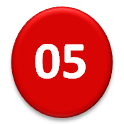Lately my biggest
stumbling block in chess other than endings has been miscalculation. Therefore
I decided to overhaul my thinking method (or lack of thereof). I did some research and bought some recommended books to remedy
the situation. These are Soltis'
Inner Game of Chess & How to Choose
a Chess Move and Tisdall's Improve Your
Chess Now! .
As I see it all
three books can be read by anyone from
1400 up, but I'm dubious if players under 1800 can benefit much. Let's start
with the most difficult which is Inner.
To make proper use of the concepts in it, it prerequires the reader to be
tactically sharp and be able to
visualize many moves ahead. Here it is all about being honest with oneself: do you really know
your tactics inside out? If not, you're better off and bound to make more
progress honing them first. With visualization on the other hand, Soltis
cuts some slack and gives some really helpful hints on how to acquire it.
Still, it is probably the hardest part of the book: I can now follow a 23 move
game blindfolded , but I had to give myself six months of
practice before continuing reading and I'm still aiming higher. (btw, I
compiled a useful visualization game collection for myself which I may post
later on).
The rest of the book
centers primarily on force and its use in calculation. Each concept is
illustrated with positions from real games with explanatory text and and just enough variations. Overall I
found it a worthwhile read.
We now move over to
Tisdall's book. It covers a wide range of topics which the author feels will
benefit the aspiring reader. I just focused on the first couple of sections
that deal with calculation & visualization. Although less exhaustive than
Inner, it does supplement the concepts put forth by Soltis and both approaches
meld nicely. A nice bonus is his way to calculate on the defensive. Both
authors are critical of Kotov's tree scheme and offer sensible, practical
alternatives. Just 100 elo points easier
than Inner.
Up to this
point, one can have a sure footing with
moves that are suitable for calculation. What about quieter moves? To that
purpose I also got How to Choose. This
one is quite different to Inner, not
only in its scope but on its outlook: It is a bit depressing. I for one hoped for a
system, but instead, at least on the surface, opens more questions than it
answers. It also ends in a down note with Fischer v Taimanov where Taimanov
sees an opportunity, mentally does everything right and as recommended and still
loses. Way to go.
It is also more
confusing in it's presentation of the material as there is no as clear
progression as in Inner.
Notwithstanding, How to has valuable
material once the reader gets to chapters 7 to 11. Chapter 8, a reality check,
is especially useful.
Most of the examples
can be followed without board. I'd say it is about 50 elo points easier than
Tisdall's.
In conclusion, if
you have calculation issues and cover the prerequirements, do get Inner Game and if you've got some extra cash
buy Tisdall's book too and compare methods. If you're hungry for more, there is
How to, but be aware of its drawbacks.
All these three, imo, require you to take notes to get a clearer picture.
Ps. Be sure to check
The Creation of a Thinking Technique article by Silman in the August 1998 issue
of Chess Life and take a (critical?) look at step 3 in de la Maza's approach at
chesscafe:
www.chesscafe.com/text/skittles150.pdf
. Finally, the latest wrinkle in calculation books appears to be Grandmaster
Preparation: Calculation by Jacob Aagaard which I have not read. However,from
what I gather from the net, it is both high level and a workbook.
Pps. A very
condensed view of Soltis' view from Inner
can be found in a chapter his newer book
How to Study Chess. This last one
I recommend for all the wider material it covers.
More on this next time











